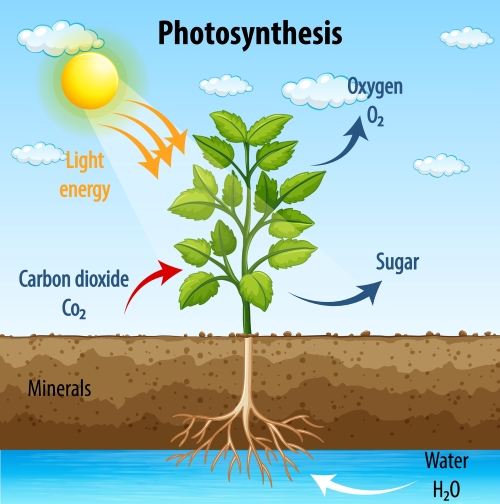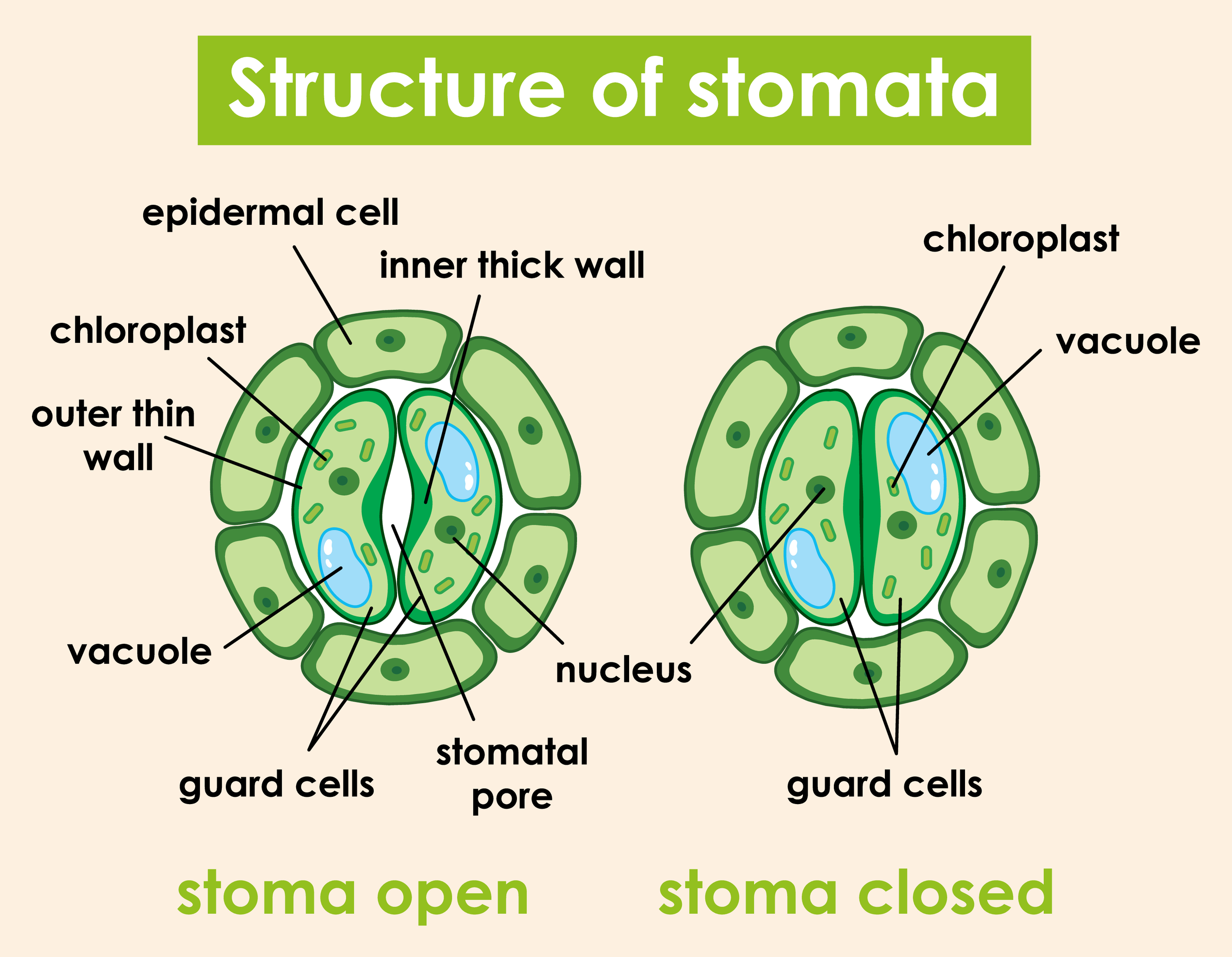Nutrition in Plants Class 7 Notes NCERT and MCQs
 24-08-2023
24-08-2023
 12:30 PM IST
12:30 PM IST
 Yadvendra Singh
Yadvendra Singh
The chapter defines various terms such as autotrophs, heterotrophs, saprotrophs and symbiosis. It describes the process of synthesis of food by plants.
Autotrophs: Autotrophs are organisms that synthesize their food on their own. Plants are autotrophs.
Heterotrophs: Heterotrophs are organisms that consume food synthesized by plants. Animals are heterotrophs.
Synthesis of food by plants: Photosynthesis is the process through which plant leaves synthesize food in the presence of sunlight and with the help of carbon dioxide, water and chlorophyll. Plant roots absorb water from the soil and stomata absorb carbon dioxide from the air. Stomata are tiny pores found on leaf surface and surrounded by cells called guard cells. Chlorophyll is the green pigment present in leaves. It absorbs sunlight and captures energy from the sunlight. Photosynthesis results into production of carbohydrates and oxygen. Plants use carbohydrates for synthesis of proteins and fats. Carbohydrates contain carbon, hydrogen and oxygen. But, proteins are made up of nitrogen. The nitrogen is absorbed by plants from the soil. In the soil, bacteria convert atmospheric nitrogen into usable form for plants.

Diagram showing photosynthesis

Diagram showing structure of leaf and stomata
Plants as heterotrophs: Certain plants show heterotrophic nutrition. They consume food synthesized by other plants. Cuscuta is one such example. It is a climber and consumes food synthesized by plant on which it climbs. It is a parasite as it uses the food synthesized by plant on which it climbs. Other plants consume insects. Such plants are called insectivorous plants.
Saprotrophs: Saprotrophs are organisms that get nutrition from dead and decaying matter. Fungi are saprotrophs.
Symbiosis: Symbiosis is the relationship in which organisms live together for the purpose of shelter and nutrition. Lichens show symbiosis. In lichens, fungus and alga live together. Alga gets shelter, water and minerals from the fungus. The fungus gets food from the alga. The relationship between the bacterium, Rhizobium and roots of leguminous plants is also an example of symbiosis. The bacterium converts atmospheric nitrogen into usable form for leguminous plants and gets food and shelter from the leguminous plant.
MCQs related to NCERT Class 7 Science Chapter 1 Nutrition in Plants
1. Organisms that get nutrition from dead and decaying matter are called
a. Heterotrophs
b. Autotrophs
c. Saprotrophs
d. Parasites
Ans. c
Explanation:
Saprotrophs are organisms that get nutrition from dead and decaying matter. Fungi are saprotrophs. Autotrophs are organisms that synthesize their food on their own. Plants are autotrophs. Heterotrophs are organisms that consume food synthesized by plants. Animals are heterotrophs. Certain plants also show heterotrophic nutrition. They consume food synthesized by other plants. Cuscuta is one such example. It is a climber and consumes food synthesized by plants on which it climbs. It is a parasite as it uses the food synthesized by plants on which it climbs.
2. Which of the following organisms are found together in lichens?
a. Algae and fungi
b. Algae and bacteria
c. Fungi and bacteria
d. Bacteria and protozoan
Ans. a
Explanation:
Symbiosis is the relationship in which organisms live together for the purpose of shelter and nutrition. Lichens show symbiosis. In lichens, fungus and alga live together. Alga gets shelter, water and minerals from the fungus. The fungus gets food from the alga.
3. Which of the following is not consumed during the process of photosynthesis?
a. Carbon dioxide
b. Oxygen
c. Sunlight
d. Water
Ans. b
Explanation:
Photosynthesis is the process through which plant leaves synthesize food in the presence of sunlight and with the help of carbon dioxide, water and chlorophyll. Plant roots absorb water from the soil and stomata absorb carbon dioxide from the air. Stomata are tiny pores found on leaf surface and surrounded by cells called guard cells. Chlorophyll is the green pigment present in leaves. It absorbs sunlight and captures energy from the sunlight. Photosynthesis results into the production of carbohydrates and oxygen.
Frequently Asked Questions (FAQs) about Nutrition in Plants
What are autotrophs?
What are Heterotrophs?
What is Photosynthesis?
Share Blog
 Latest
Latest 
Comments